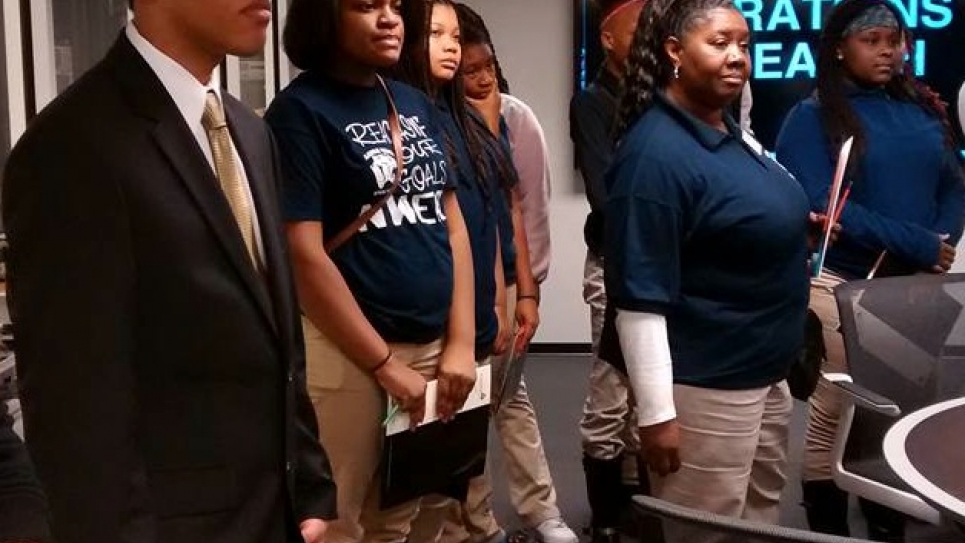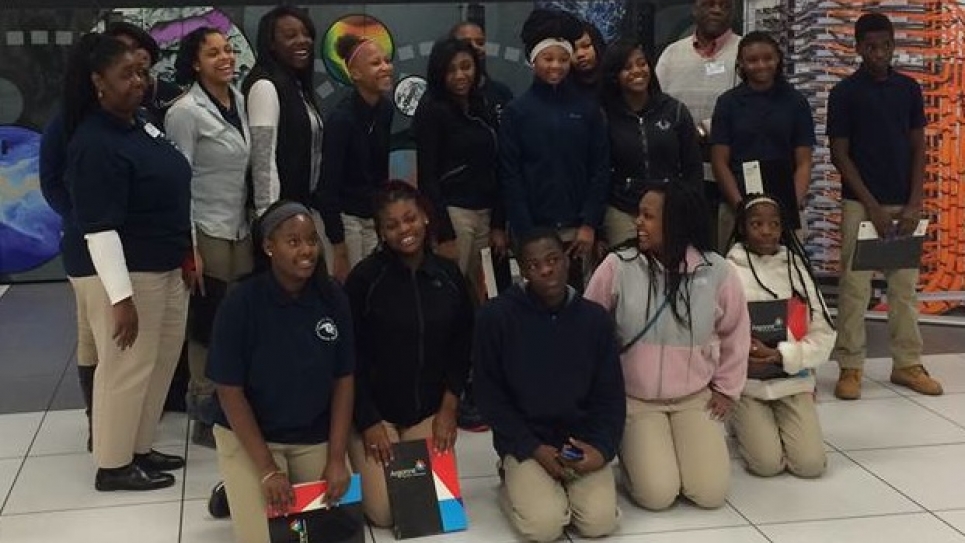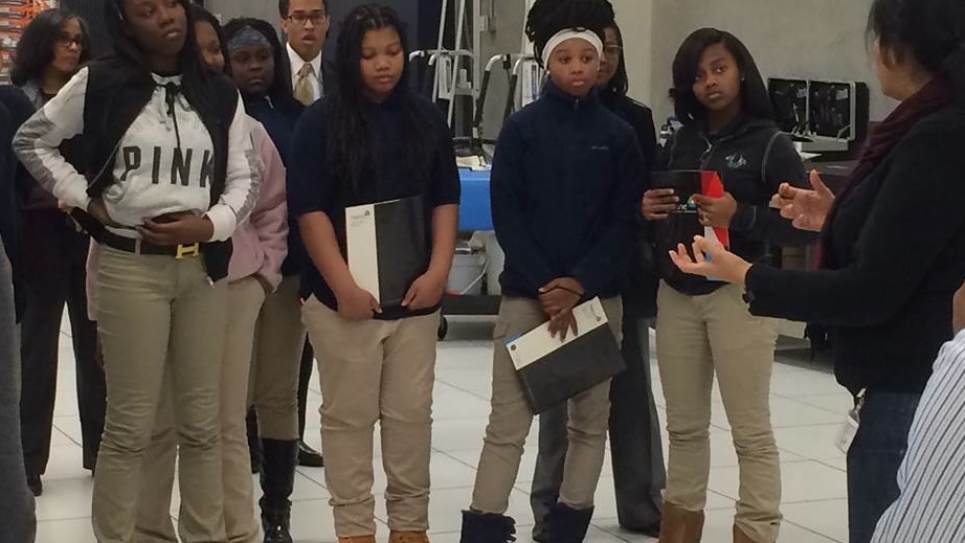
Inspiring the Next Generation of Computational Thinkers
The City of Chicago and the U.S. Department of Energy's (DOE's) Argonne National Laboratory came together this winter for a My Brother's Keeper event, a one-day hands-on workshop connecting the dots between computational thinking and science, technology, engineering and math (STEM) careers for 8th grade students attending the Laura S. Ward STEM School.
My Brother's Keeper is a White House commitment to shrink the "advancement gap" faced by many young men of color by calling on the private and public sectors to identify evidence-based approaches and provide equal access to those students most underrepresented in STEM fields.
Staff from the Argonne Leadership Computing Facility, a DOE Office of Science User Facility, and Argonne's Education Programs were on hand to guide more than 40 students through a STEM-filled day of computational thinking.
"Helping these kids make the connection between computational thinking and their everyday lives can help them get over the feeling that computer science and computational thinking are abstract concepts," said Argonne computational scientist Jini Ramprakash. "This connection makes computational thinking much simpler and more relatable like problem solving, which they do every day — sometimes without even knowing they do. Being here at Agonne helps these chidren understand that there is a whole different life outside of their community."
A way of using math to understand and solve problems, computational thinking allows researchers to do everything from creating models and simulations visualizing massive amounts of data to cataloging thousands of scientific properties to make batteries more efficient and less expensive.
Using these same basic methods, visiting students programmed robots, games and motorized vehicles to learn the structure of specific commands and how they cause certain actions that can later be used to predict patterns, create visualizations or provide other useful information.
Kyle Westbrook, the executive director of the City of Chicago's Education Policy Office, leads the initiative's local effort by connecting education, not-for-profit, faith-based and community-based efforts to support improved life outcomes for youth, with a particular emphasis on young men of color.
"Our analysis of major sectors of job growth in the Chicago area show that an overwhelming number of these opportunities will be STEM-related," said Westbrook. "Knowing that, it comes down to how the city and our partners are preparing students to work collaboratively in a technology-infused environment that is indicative of the 21st century workforce."
As an Argonne engineering specialist and graduate of Olive-Harvey Junior College in Chicago, Harold Gaines has walked the STEM path many of the students will find themselves on. Introduced to Argonne via a college counselor 40 years ago, Gaines works in the field of electronics and instrumentation in the Biosciences Division.
"Working in the STEM/research field gives one the chance to be creative and continue to grow mentally and intellectually," said Gaines. "My suggestion to the students is to start considering what you enjoy or what you are curious about as early in your school career as possible."
Illinois Math and Science Academy senior Tavis Reed delivered a keynote to students on his research and path to STEM. Reed recently won a gold medal in the annual National Afro-Academic, Cultural, Technological and Scientific Olympics (ACT-SO) competition for his Argonne-aided research on cellulosic ethanol. Now, with a provisional patent and goals to scale-up his research, Reed admits that when he started thinking about his future, he wasn't sure whether STEM was the right path for him.
"I was always interested in science but I didn't think that I would want to do it because I wasn't sure how hard or rewarding it would be," said Reed. "But I found that I really love chemistry and biology, and meeting scientists at Argonne who are just as excited about what they do just rubs off on you."
Exposure is one thing, but all in attendance agreed that for any program to be effective, it would have to consist of a sustained effort on the part of the parents, teachers and community.
Suzette Smith Boyd, 7th and 8th grade teacher at Laura S. Ward STEM School, said that teachers and the community play a vital role in encouraging students to stay in school and be competitive enough to succeed on a national stage.
"Being here at Argonne helps these children understand that there is a whole different life outside of their community," said Boyd. "They've already got the interest in science and mathematics; they just need programs like My Brother's Keeper to help provide access and opportunities to ensure that they stay focused and on track."
Following the My Brother's Keeper event and to continue the excitement created by it, Argonne sent 30 computer scientists to neighborhood schools for Hour of Code in December: for one week, students received advice and guidance from Argonne computer scientists on computational thinking skills such as how to write computer code.
Argonne National Laboratory seeks solutions to pressing national problems in science and technology. The nation’s first national laboratory, Argonne conducts leading-edge basic and applied scientific research in virtually every scientific discipline. Argonne researchers work closely with researchers from hundreds of companies, universities, and federal, state and municipal agencies to help them solve their specific problems, advance America’s scientific leadership and prepare the nation for a better future. With employees from more than 60 nations, Argonne is managed by UChicago Argonne, LLC for the U.S. Department of Energy’s Office of Science.
The U.S. Department of Energy’s Office of Science is the single largest supporter of basic research in the physical sciences in the United States and is working to address some of the most pressing challenges of our time. For more information, visit the Office of Science website.

